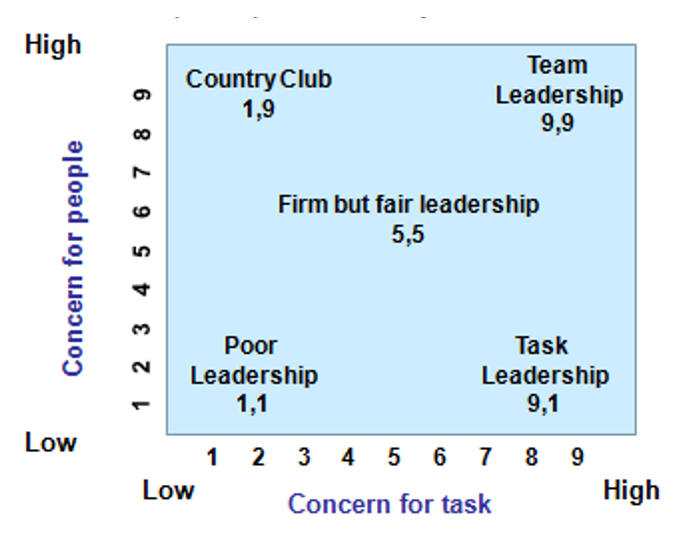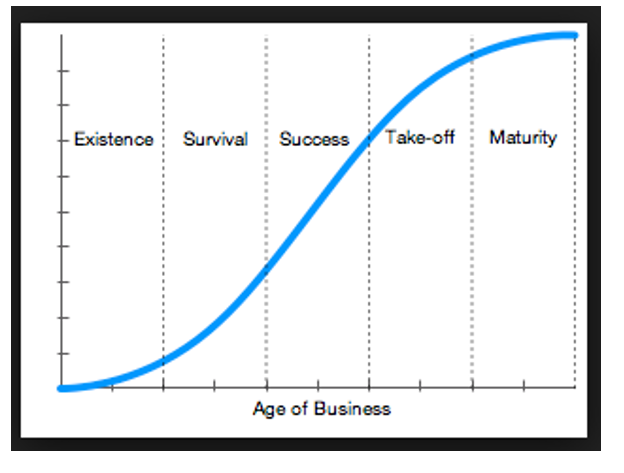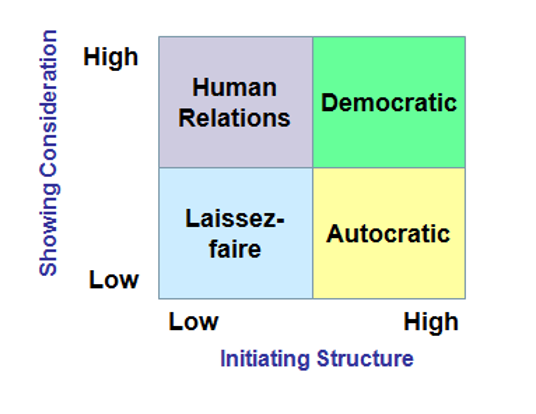Introduction
Leadership is a vital requirement in any business environment. Over the years, numerous efforts have been made by scholars and business executives to understand what good leadership entails. Individually and collectively, people have used different avenues to access information on effective leadership.
Debatably, leadership is useful for improving one’s professional, personal and social life (Northouse 2010, p. 1). In general, corporate organizations believe that individuals with the ability to effectively lead can easily facilitate the achievement of goals. To meet the needs of business enterprises, academic institutions across the world have responded by developing leadership programs to mould individuals into effective leaders.
Leadership Types and Theories
Considering that people envision the concept of leadership differently, varying definitions of leadership exist. While some scholars regard leadership as the centre of change, others view leadership from a personality perspective and hence regard it as a combination of unique characteristics possessed by individuals (Northouse 2010, p. 2). Arguably, the special characteristics permit leaders to influence subordinates toward the achievement of goals and performance improvement. Additionally, some scholars define leadership as the ability to have power over others.
While leadership is critical, the greatest concern is always how to lead. In response to this, management theorists made attempts to define some leadership styles. Figure 2 shows some leadership styles. Apparently, leadership styles are the result of complex interactions between how individuals feel and how they think (Kippenberger 2002, p. 5). Based on the contingency theory of leadership, no single leadership style can fit all situations. The appropriate leadership style may be determined by factors existing in a particular setup.

A well-known management scientist by the name Kurt Lewin came up with a number of leadership styles including autocratic or authoritative, participative or democratic, laissez-faire or free rein, and transformational (Iqbal 2011, p. 11). Autocratic leadership is based on management theories and the leader is expected to make all decisions. Besides telling subordinates what to do, the leader spends time monitoring what they do. Autocratic leadership style is appropriate when dealing with a team that lacks internal drive or when immediate results are needed. Participative leadership is based on participative leadership theories and involves followers in the decision making process.
The leader consults team members and works with them to achieve goals. This leadership style is useful when leaders have a desire to develop talent among followers. In a laissez-faire approach, the leader allows subordinates to work independently. Subordinates are permitted to develop policies and where possible, make decisions as appropriate. The style is mostly used in environments where followers are deemed to be proactive and innovative. Finally, there is the transformational leadership style that is based on relational leadership theories. The style is considered helpful when a leader is focused on transforming subordinates. Leadership may also be classified as directive, supportive, and achievement-oriented (Lussier 2011, p. 342). While directive leadership is quite similar to autocratic or authoritarian leadership, supportive leadership can be likened to democratic leadership.
Allegedly, it is easier for leaders to change a given situation rather than the leadership style (Lussier & Achua, 2012). According to situational leadership theories, leaders should be able to choose the most appropriate leadership style guided by situational factors.
Entrepreneurs and Entrepreneurship
Defining the term entrepreneur is often a challenging task. Apparently, entrepreneurs come in many different shapes and sizes (Thompson & Bolton 2007). For this reason, it is quite difficult to determine with exactness, what the term entrepreneur really means. While some entrepreneurs have a very strong family background of entrepreneurship, some do not have such privileges. Again, whereas some entrepreneurs begin with huge inheritances, some do not have anything to inherit and are compelled to start operations from a state of poverty. Certainly, those with no inheritances have to overcome various barriers in order to survive. Other considerations include age and gender. Generally, entrepreneurs are very distinct people and are not like any other ordinary person.
According to Drescher (2007, p. 54), the term entrepreneur may be used to refer to a person who is actively involved in the delivery of work-related tasks. In the past, it was also used to denote people who are not afraid of taking risks in order to deliver on assigned tasks. An entrepreneur may also be regarded as an individual who bears uncertainty. He or she is a person with the ability to bring together different factors of production for the benefit of a business enterprise. Unlike other ordinary businessmen and women, an entrepreneur can easily discover and take advantage of existing opportunities. However, an entrepreneur may be affected by his or her family background, level of education, or life experiences.
Similar to the term entrepreneur, the term entrepreneurship is difficult to define. This notwithstanding, it may be used to imply self-employment of some kind (Drescher 2007, p. 54). Apparently, different scholars have made attempts to define the term entrepreneurship by looking at it from different angles. While some research professionals have considered the economic side of entrepreneurship, others have turned to philosophical or sociological arguments to come up with appropriate definitions.
According to Thompson and Bolton (2007, p. 18), an effective entrepreneur has the ability to motivate employees through emotional connection. Arguably, he or she also displays unique personality traits that are extremely essential for success to be realized. Such characteristics include perseverance, ability to take risks, a desire to succeed, creativity and ability to assume responsibility, honesty, and a high level of integrity.
In a study by Zimmerman (2008, p. 17), he found out that the theory of entrepreneurship starts with the beginning of the word entrepreneur. Allegedly, the word entrepreneur has its origin from the French words entre and preneur whose direct translation is to embark on. The meanings of these words are considered to be in agreement with an earlier theory in which the role of entrepreneurs was equated to that of intermediaries responsible for the movement of goods from one place to another across the supply chain. The initial commercial theory of entrepreneurship was developed by Richard Cantillon, an Irish businessman.
The Neoclassical economic theory is another form of conventional economic theory developed in the 19th century. Through his theory of general equilibrium, Alfred Marshall made a great addition to the theory of entrepreneurship. Specifically, Marshall’s contribution to the entrepreneurship theory was the need for an individual to organize the various factors of production (Zimmerman 2008, p. 19). Generally, the idea was to ensure that factors of production are used effectively to realize the goals of a business. Without proper coordination, there is a possibility that a business enterprise will incur numerous losses. Based on some research findings, however, the concept of the entrepreneur is irrelevant in the business world. This claim has, however, been refuted by modern-day theorists.
Types of Entrepreneurs
There are four different types of entrepreneurs explained as follows. Small business entrepreneurs are those who run their own businesses. These entrepreneurs are less concerned about making profit and focus more on meeting the needs of their families. The other category of entrepreneurs is that associated with scalable entrepreneurship. Generally, these entrepreneurs are concerned about growing a business enterprise to be the best. To achieve their business goals, they go after talented employees. Managers form another type of entrepreneur. Typically, these entrepreneurs are in charge of large businesses and are expected to be highly innovative individuals. Finally, social entrepreneurs are those who are concerned with meeting the needs of individuals in a particular business enterprise.
Business Growth and Entrepreneurship
As a business enterprise continues to grow, it is imperative for entrepreneurs to adapt and deal with emerging challenges. Figure 1 shows five key stages in the development of any business enterprise. They include existence, survival, success, take-off, and maturity. During the initial stages of a business, the demands of leadership are not quite enormous and small business and social entrepreneurs may be used. However, as the business continues to grow, more specific demands begin to emerge and entrepreneurs have to do more. Scalable entrepreneurship and the services of managers become very critical as a business enterprise advances from the initial stages to success, take-off and later, to the maturity stage.

Success in a Business Enterprise
There is a very big connection between effective entrepreneurial skills and success in any business undertaking. As explained in the previous section, the general agreement among the various theorists is that an entrepreneur has a very important role to play in any business environment. Without good leadership and entrepreneurial skills, business success will be very elusive and losses may be incurred.
Although business enterprises can utilize technology to improve performance and compete effectively, it takes a dynamic and focused leader to ensure that technology can be used beneficially. Without a doubt, effective leaders and entrepreneurs are creative and have the ability to explore opportunities presented in different ways to improve business performance. Without such a focus, the application of technology may have negative consequences rather than promote efficiency and growth in a business.
Decision Making
Given that large sums of money are often wasted by making inappropriate business decisions, it is important for business enterprises to engage the services of highly qualified and unique individuals to drive the business agenda on a day-to-day basis. Figure 3 shows the link between leadership behaviours and decision styles. As pointed out in the previous section, poor leadership and entrepreneurial skills are to blame for most failures encountered in business operations. Leaders and entrepreneurs must utilize enterprise resource planning systems to enhance the decision making process in every department (Dezdar 2012, p. 1075).

Research findings indicate that the use of enterprise resource planning systems is a positive addition to a business enterprise and improves the quality of decisions that are made from time to time (Zˇabjek, Kovacˇicˇ & Sˇtemberger, 2009). Besides improving efficiency, the use of such systems ensures consistency in the way decisions are made. Whereas investing in such systems is a costly venture, associated benefits should encourage business enterprises to adopt them (Monk & Wagner 2006). In a study by Ward, Hemingway, and Daniel (2005, p. 54), they established that the use of an improved decision-making process based on an enterprise system enables business enterprises to deal with competition effectively.
The Business Environment
Generally, the current business environment is subject to constant change (Zˇabjek, Kovacˇicˇ & Sˇtemberger, 2009). Allegedly, this is a fact that has greatly been magnified by the changes in technology witnessed everywhere in the world (Pickett 2000, p. 225). For this reason, leaders and entrepreneurs in the contemporary business world must be proactive and extremely vibrant (Chen 1999, p. 86). By and large, business enterprises are today presented with numerous challenges that require leaders to be innovative and to devise strategies that will guarantee growth in a competitive business setting. Certainly, effective business entrepreneurs must be able to use the digital marketplace maximally to grow (Lunn 2002, p. 24). Ostensibly, this will only work if an entrepreneur has a strong desire to take his or her business enterprise to a different level.
Complexity of Today’s Business Environment
To a large extent, today’s business environment is quite complex and leaders must be fully engaged in learning how to effectively deliver. According to Lunn (2002, p. 24), the complexity of the business environment is linked to growth in technology. Among other things, technological advancements have enabled business enterprises to have access to a wider market.
The growth of the Internet, for example, has created a new market for goods and services that extends across geographical boundaries. While this is a positive development, it presents serious organizational challenges that must be dealt with. Leaders and entrepreneurs must thus work out strategies to ensure that business enterprises can survive in a complex business setup.
Future Trends
As a result of technological advancements, business enterprises have to devise effective strategies in order to survive in a competitive environment. The proliferation of the Internet, for example, implies that competition is no longer local but global (Wright & Burns, 1998). Business enterprises are thus compelled to take advantage of networking and collaboration in order to deliver. In addition, the Internet provides business enterprises with an opportunity to carry out business operations beyond geographical boundaries. The application of integrated systems is now an important consideration for every business enterprise (Sandoe, Corbitt & Boykin 2001). Turban, Aronson and Liang (2005, p. 35) also argued that the use of modern business systems is mandatory for every business enterprise.
Where a business enterprise is unable to fully establish itself in a foreign land, it is possible to form alliances with like-minded business enterprises. Typically, the parties to an alliance are responsible for various aspects of the business (Underdown & Talluri 2002).
For collaborations and alliances to work effectively, it is imperative for business enterprises to be led by entrepreneurs who are focused and have the ability to ensure that parties involved are not disappointed. Suitable leadership styles must be used and as stated earlier, this will vary from one environment to another. As noted by Al-Mudimigh (2007, p. 870), advancements in technology require business enterprises to use modern systems in order to compete successfully.
Conclusion
The 21st century presents a very complex business environment which requires leaders who are creative and focused. Business enterprises must be led by leaders who have the ability to recognize existing opportunities and use them to grow and improve performance. While growth in technology is good and offers business enterprises numerous opportunities that can be explored, it may also affect business operations negatively. Consequently, it is imperative for leaders to ensure that the application of technology can lead to positive growth.
Reference List
Al-Mudimigh, AS 2007, ‘The Role and Impact of Business Process Management in Enterprise Systems Implementation’, Business Process Management Journal, vol. 13. no. 6, pp. 866 – 874. Web.
Chen, T 1999, ‘Critical Success Factors for Various Strategies in the Banking Industry’, International Journal of Bank Marketing, vol. 17. no. 2, pp. 83 – 91. Web.
Dezdar, S 2012, ‘Strategic and Tactical Factors for Successful ERP Projects: Insights from an Asian Country’, Management Research Review, vol. 35. no. 11, pp. 1070 – 1087. Web.
Drescher, S 2007, What is Entrepreneurship? – Historical Approach and Critical Discussion, GRIN Verlag, Germany. Web.
Iqbal, T 2011, The Impact of Leadership Styles on Organizational Effectiveness, GRIN Verlag, Germany. Web.
Kippenberger, T 2002, Leadership Styles, John Wiley & Sons, Hoboken, NJ. Web.
Lunn, M 2002, ‘Using Business Models and Revenue Streams for Digital Marketplace Success’, Information Management & Computer Security, vol. 10. no. 1, pp. 20 – 27. Web.
Lussier, R 2011, Management Fundamentals: Concepts, Applications, Skill Development, Cengage Learning, Mason, OH. Web.
Lussier, R & Achua, C 2012, Leadership: Theory, Application, & Skill Development, Cengage Learning, Mason, OH. Web.
Monk, E. & Wagner, B 2006, Concepts in Enterprise Resource Planning, Thomson Course Technology, Bristol. Web.
Northouse, PG 2010, Leadership: Theory and Practice, SAGE Publications, Thousand Oaks, CA. Web.
Pickett, L 2000, ‘People Make the Difference’, Industrial and Commercial Training, vol. 32. no. 6, pp. 225 – 229. Web.
Sandoe, K, Corbitt, G & Boykin, R 2001, Enterprise Integration, John Wiley & Sons, New York, NY. Web.
Thompson, J & Bolton, B 2007, Entrepreneurs, Routledge, Burlington, MA. Web.
Turban, E, Aronson, J & Liang, T 2005, Decision Support Systems & Intelligent Systems, Prentice-Hall, Englewood Cliffs, NJ. Web.
Underdown, R & Talluri, S 2002, ‘Cycle of Success: A Strategy for Becoming Agile through Benchmarking’, Benchmarking: An International Journal, vol. 9. no. 3, pp. 278 – 292. Web.
Ward, J, Hemingway, C & Daniel, E 2005, ‘A framework for Addressing the Organizational Issues of Enterprise Systems Implementation’, Journal of Strategic Information Systems, vol. 14. no. 2, pp. 97 – 119. Web.
Wright, DT & Burns, ND 1998, ‘New Organization Structures for Global Business: An Empirical Study’, International Journal of Operations & Production Management, vol. 18. no. 9/10, pp. 896 – 923. Web.
Zˇabjek, D, Kovacˇicˇ, A & Sˇtemberger, MI 2009, ‘The Influence of Business Process Management and Come other CSFs on Successful ERP Implementation’, Business Process Management Journal, vol. 15. no. 4, pp. 588 – 608. Web.
Zimmerman, J 2008, Refining the Definition of Entrepreneurship, ProQuest, Ann Arbor, MI. Web.